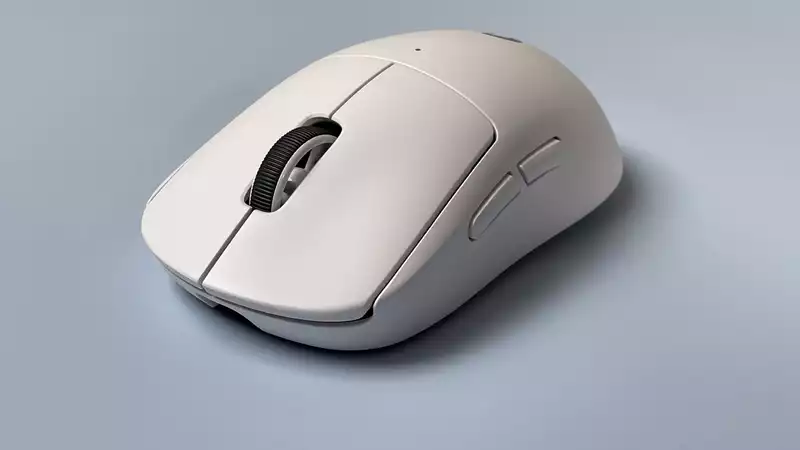Everyone knows that gamers want two things: migraine-inducing RGB and 9,000+ buttons per mouse. Or ......." Logitech assures us that, and the Pro X Superlight 2 is targeted at one key metric: "minimal weight."
This Superlight moniker is more than just a marketing term. At only 60 grams, it is 3 grams lighter than the previous model. A mediocre gamer like myself will not be able to tell a difference of this magnitude, but there is no denying that this is a beautiful and nimble pointer.
Remarkably, this lightness is achieved without drilling holes in the frame. In fact, it is 8 grams lighter than the SteelSeries Aerox 3 Wireless with holes, and it does this without looking like an RGB cheesegrater (let's not give Razer ideas).
Instead, you'll find a comfortable, sturdy frame that won't ruin the classic. No sudden sharp angles or curves, no excessive buttons, no RGB. The unobtrusive design keeps things simple and, as a bonus point, doesn't dazzle with flashing lights. Sure, there's a pink color option, but it doesn't glow in the dark.
But light weight isn't the only upgrade from the previous version. A new Hero 2 sensor has been added, the maximum DPI has been increased from 25,600 to 32,000, and the polling rate has doubled to 2,000 Hz. Gone is the prehistoric microUSB port (USB-C instead), battery life has increased from 70 to 95 hours, and the once mechanical switch is now a hybrid of optical and mechanical. Many small changes have piled up.
Two PTFE feet on the bottom help the Superlight 2 glide effortlessly over the mouse mat. It's surprisingly lightweight, so it's faster than the Asterion bedding and can fly all over the place; not as smooth as the Razer Cobra Pro, but not far behind.
The effect on gameplay is outstanding, excelling in fast-paced shooters. The new Hero 2 sensor is quick, accurate, and wonderfully stable, perfect for charging through Call of Duty maps like a headless chicken (my specialty). In slower games that don't necessarily require the smoothness of a low-weight glide, it's more gratifying than heavier, clunkier alternatives.
The hybrid optical/mechanical left- and right-click buttons are solid and downright mushy compared to my previous Razer Basilisk's. The sound is loud, and even with over-the-ear headphones on, you can hear the music. This is a mouse that really wants you to know that the clicks are working.
The two customizable buttons on the side are quiet and soft to press. The scroll wheel, on the other hand, is satisfyingly light, and I could scroll up and down all day and not get tired of it (instead, I have to "work" and "game"). The clicks, however, are dull and heavy, like stepping through thick mud. At least it's quiet.
One advantage of the lack of RGB (aside from keeping my retinas intact) is the Superlight 2's long battery life; Logitech claims 95 hours, which isn't the longest I've seen, but it should last two weeks before needing to be recharged. In my testing, the battery was still going strong at 89% after over 35 hours of solid gaming and work use, so I would expect it to last much longer than the estimated 95 hours.
To check battery life, you need to open Logitech's G Hub app. The macro assignments are confusing and there is a lot of depth and control regarding DPI options, but my app had a habit of resetting the DPI when I opened a full-screen game.
Speaking of DPI, the Superlight 2 has no way to change the DPI on the mouse itself. This is part of the unobtrusive physical design, and one might say unimaginative; if RGB is your thing, you might want to look elsewhere.
However, with such good performance, I would choose something less imaginative every day. The Superlight 2 does the basics really, really well. Its cloud-like lightness makes it ideal for fast and furious gaming, but more than that, it's a great pointer. Its super-smooth gliding and excellent sensor make it a great choice for many gamers.
.

Comments